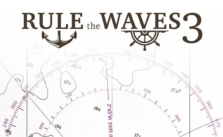Rule the Waves 3: How to Launch an Airstrike

If you’re captivated by the strategic depth of Rule the Waves 3, you’re not alone. The intricate naval combat mechanics of this game require thoughtful decision-making and a comprehensive understanding of various interconnected factors. A key aspect of the game is effectively utilizing airstrikes, which can dramatically turn the tide of battles.
Airstrikes let you deploy a group of aircraft from either a carrier division or a land base to attack enemy positions. To execute this tactical move effectively, you must understand several factors: the originating division, available air formations, strike coordination, spotting value, number of aircraft, types of strikes, loadouts, and anti-aircraft fire.
Launching an Airstrike in Rule the Waves 3
Strike Screen: Navigate to the strike screen, where you’ll manage all airstrike operations.
Choose the division from which the airstrike will originate, either a carrier division or a land base.
Once the division is selected, a list of air squadrons available at that base will appear. Check the box next to the formation to select the air formations to participate in the strike.
Estimating Arrival and Landing Time: At the top of the screen, you’ll find estimated times for arrival at the target and return landing.
Coordinating the Strike: If you opt for a coordinated strike, your air formations will stick together, improving their chances against defending fighters and Anti-Aircraft (AA) fire. Bear in mind that a coordinated strike takes longer to form.
Spotting Value: Each ship equipped with aircraft has a spotting value that represents the deckload capacity for aircraft. This number denotes the maximum size of a strike that can be launched from the ship. If you assign more aircraft than the spotting value, the strike screen will highlight this and prevent you from launching the strike.
Modifying Aircraft Numbers and Strike Type: By right-clicking the corresponding value on the screen, you can modify the number of aircraft in a strike formation or adjust the type of strike (naval with AP bombs and torpedoes, or land with GP bombs).
Adjusting Loadout: Each participating formation’s loadout can be adjusted. An aircraft with a heavy bomb load will carry more bombs, reducing its range and speed and making it more vulnerable in air combat. By default, aircraft will select a medium load or torpedoes in a naval strike if they can carry them.
Understanding Anti-Aircraft Fire: Ships are equipped with AA guns for self-defense. The effect of AA fire includes shooting down, damaging, or making enemy aircraft abort their attack. AA fire also disrupts the attacking aircraft formation, reducing their attack hit chance.
Considering Damage and Other Factors: Damage to a ship’s superstructure can reduce the effectiveness of its AA guns. The accuracy of AA fire and bombing is affected by various factors such as technology, visibility, aircraft speed, target ship type, and crew quality.


